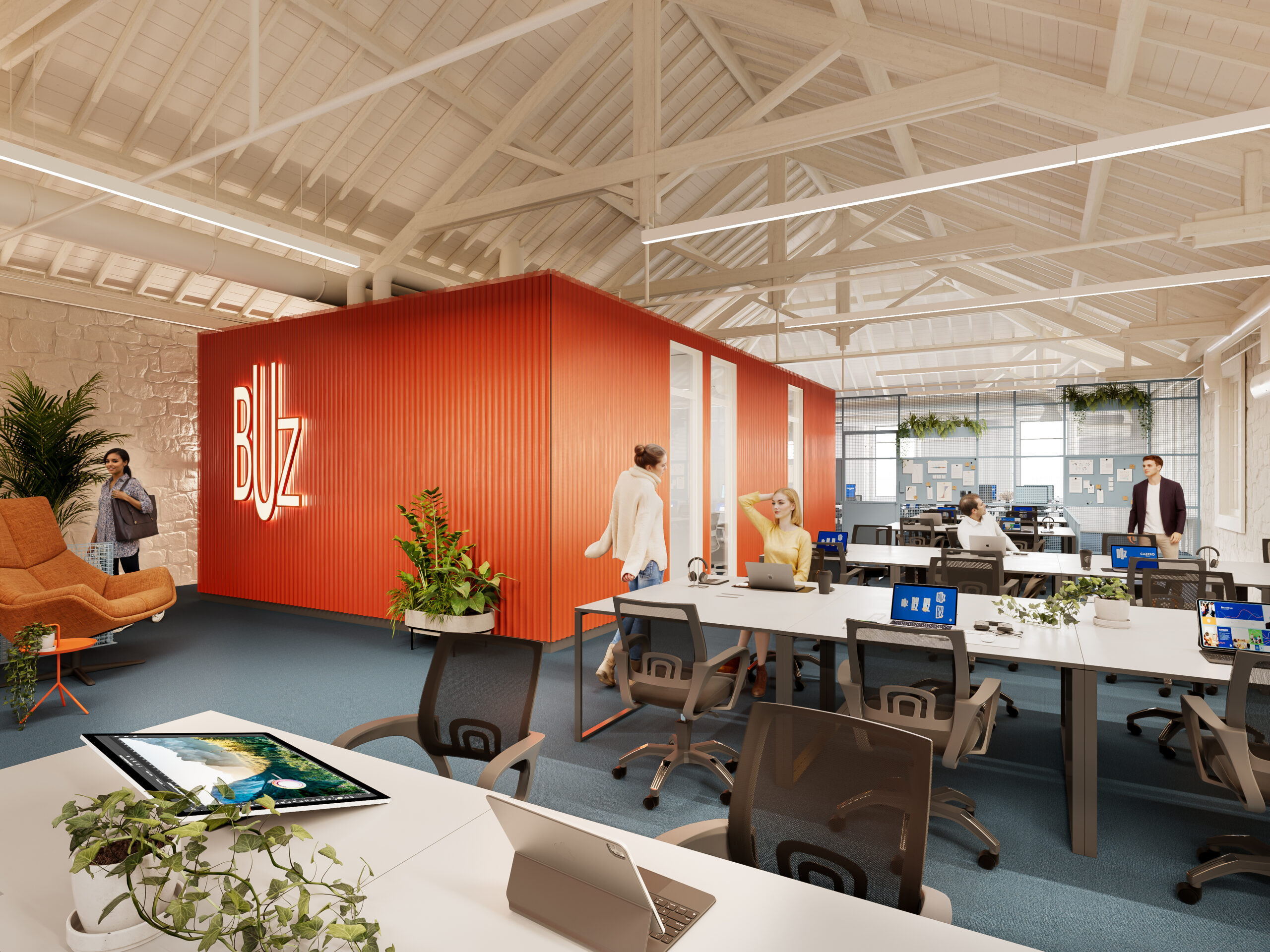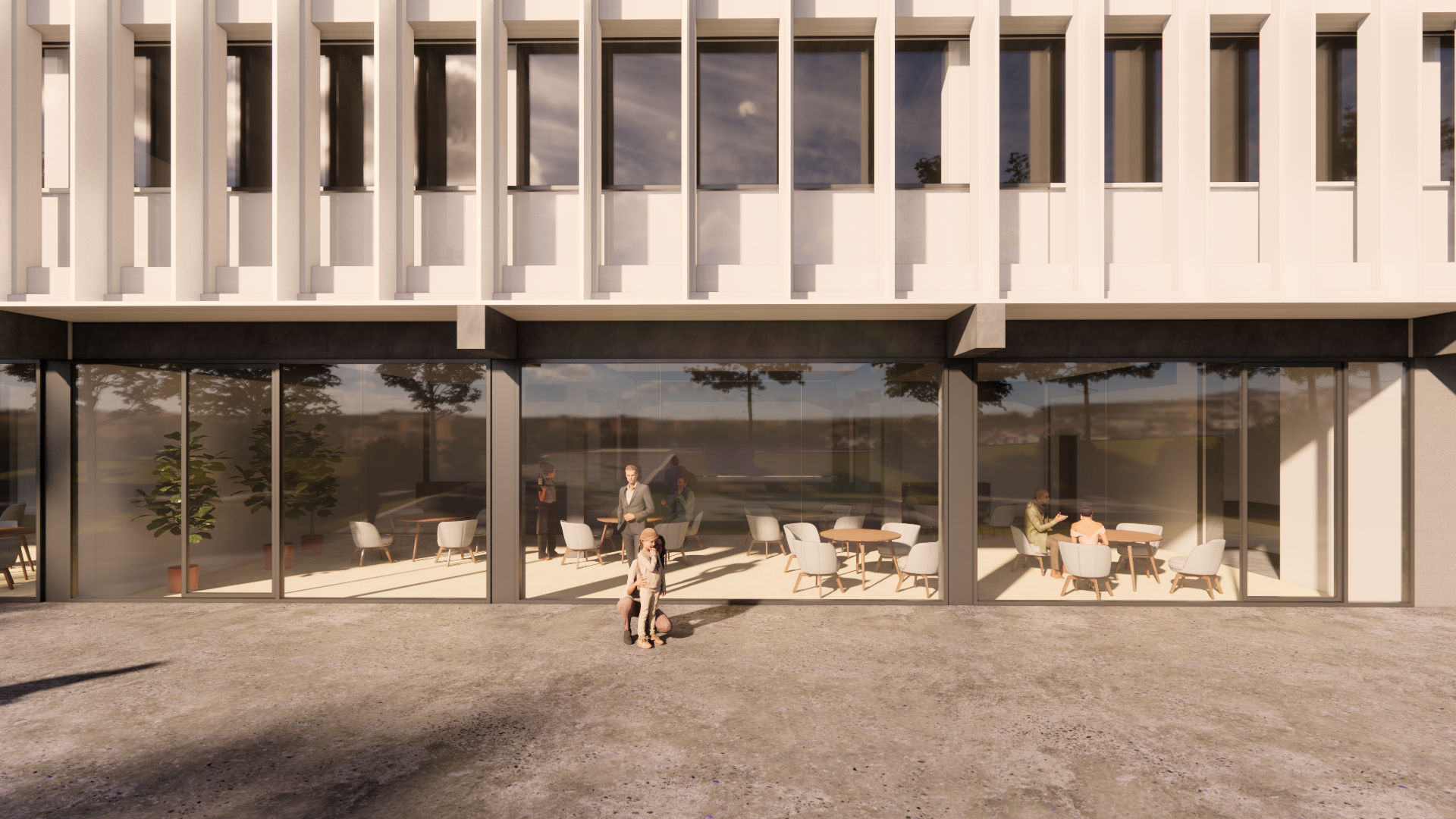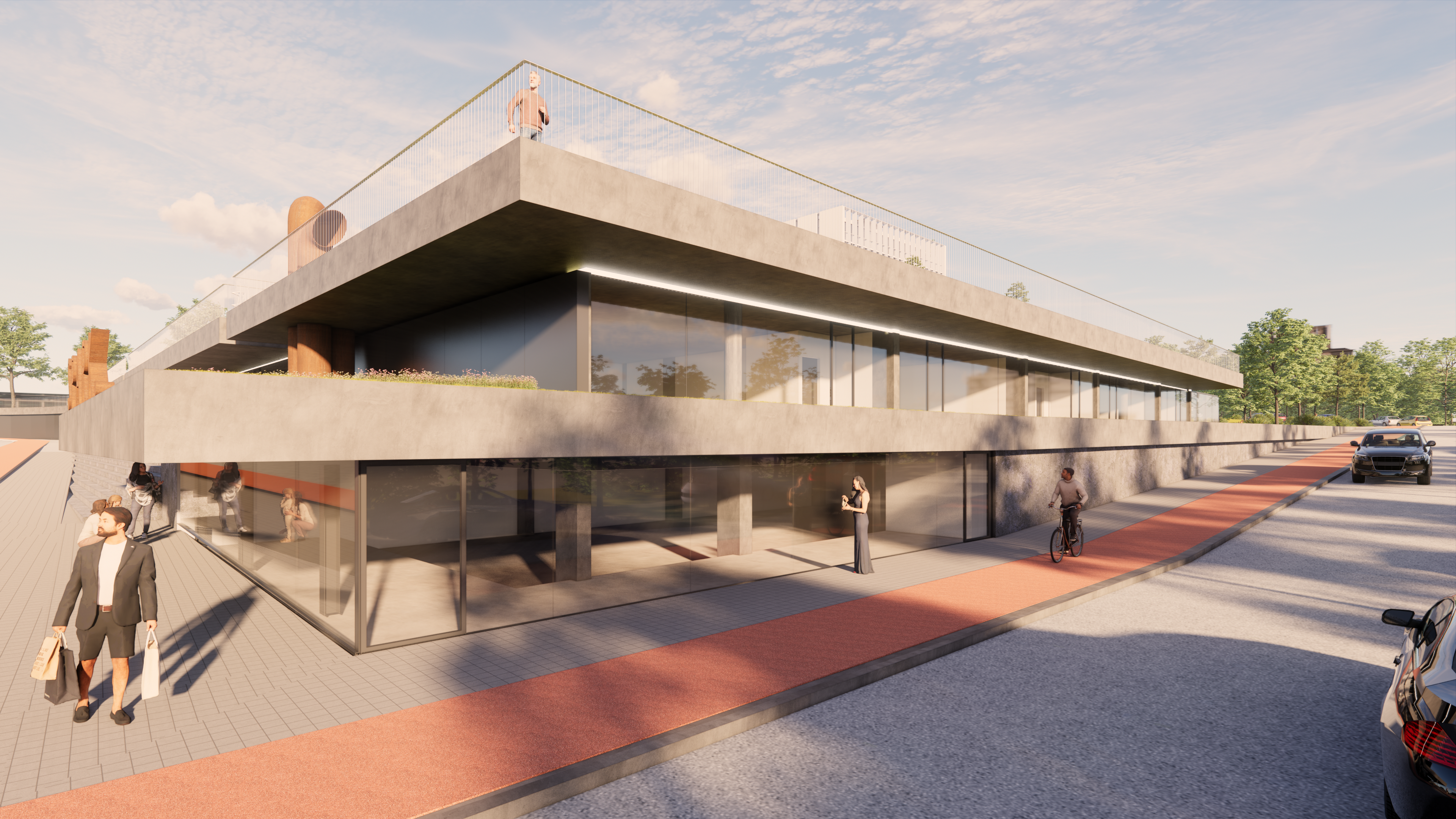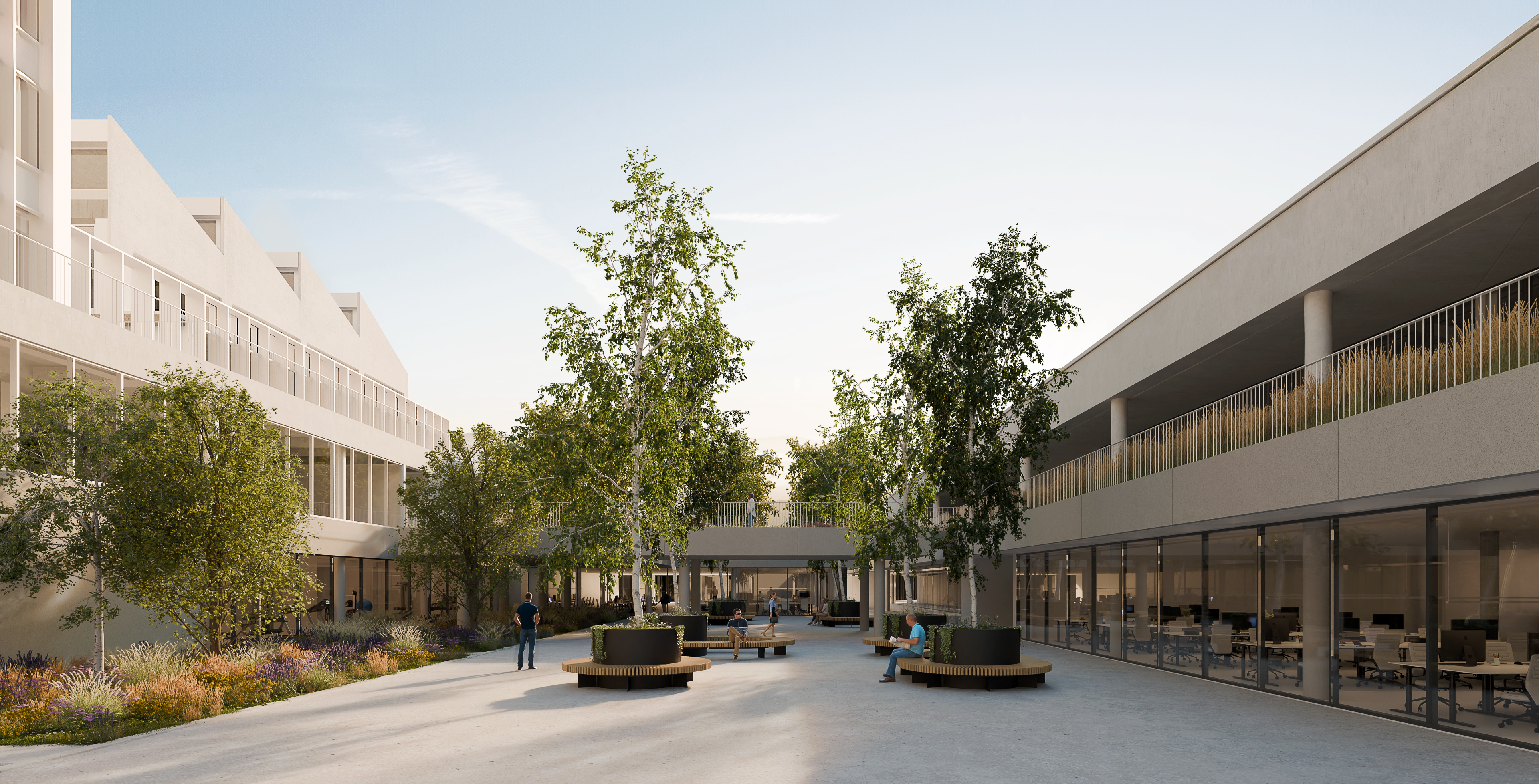For decades, offices and shops were functional spaces, designed to produce or sell. Today, that logic is undergoing a profound shift. New ways of living, working, and consuming require spaces that are more flexible, human-centred, and integrated: spaces that create not only economic value but also social and urban impact.
More and more, offices and retail are no longer isolated — they coexist within the same development, fostering flexibility, convenience, user well-being, and a stronger sense of community. This coexistence also plays a crucial role in revitalising the surrounding area and often gives rise to new, more complete, connected, and sustainable urban hubs.

Offices: from open space to shared experience
Work is no longer a place, it has become an experience. With the rise of hybrid models, the growing focus on well-being, and the need to strengthen bonds between people and teams, offices are being transformed into true community platforms.
Today, the most relevant workspaces are those that embrace diverse ways of being and working, promoting a balance between focus, collaboration, and overall well-being. These are living spaces, designed to accommodate a diversity of rhythms, functions, and profiles.
Modern offices are dynamic environments designed to support multiple ways of working and interacting, spaces that foster connection, co-creation, inspiration, and a sense of belonging.
They are defined by:
- Formal and informal areas that complement each other, adaptable to the time of day or the task at hand;
- Spaces for rest, social interaction, and leisure, which humanise the workday and spark creativity;
- Biophilic design, thermal and acoustic comfort, abundant natural light, and materials that are pleasant to the touch and sight;
- Technology that supports work seamlessly, with connectivity, security, and integrated collaboration tools.

Flexibility as a Key Principle
In a world where work is hybrid, projects are fluid, and teams are organised in increasingly diverse ways, flexibility is no longer a luxury — it’s a structural value. Spaces must keep pace with this fluidity. Offices are no longer fixed structures; they have become dynamic platforms, capable of transforming in real-time. Today, a truly intelligent workspace anticipates change, rather than simply reacting to it.
This flexibility takes many forms:
- Multi-purpose rooms that serve as meeting spaces in the morning, creative studios in the afternoon, or event venues by the end of the day;
- Modular and tech-enabled furniture that allows for quick layout changes, with no construction, noise, or disruption;
- Coworking areas and shared zones that belong to no one in particular but serve everyone, encouraging cross-pollination, spontaneity, and innovation;
- Flexible occupancy models designed for companies that need to grow without being tied to rigid frameworks;
- Integration with digital platforms and apps that enable room bookings, space management, resource allocation, and even internal community building.

Commercial Spaces: from point of sale to point of connection
In a world where time is scarce and convenience is essential, commercial spaces are also becoming social hubs and extensions of daily life, blending utility, experience, and proximity. Today’s consumer values environments that go beyond transactions: they want to feel good, be surprised, and feel part of something.
This shift is giving rise to a new generation of commercial spaces:
- Smaller, more versatile units, ready to quickly adapt to different brands or formats;
- Flexible service mixes, combining food, wellness, convenience, and even culture, creating more complete and vibrant urban hubs;
- Integration with outdoor areas, including pedestrian zones, terraces, and plazas that encourage continuous, open use of public space;
- Activation potential, through events, markets, pop-up experiences, or partnerships between brands and the local community;
- Third places — in-between spaces where people feel comfortable, stay longer, and return often, bridging the gap between home and work.

Retail curation and the hybrid model: creating value for brands and communities
The traditional logic of filling square meters with any available store is being replaced by a more strategic and selective approach: a curated retail mix that prioritises brands aligned with the purpose of the space, the people who use it, and the surrounding community.
This curatorial mindset extends beyond brand profiles, considering the type of relationship to be created that encompasses convenience, well-being, local identity, sustainability, and innovation. And increasingly, that relationship unfolds across two dimensions: physical and digital. Today’s most relevant retail is hybrid. It lives in the physical space but is amplified through technology and integration with digital platforms.
Examples of this hybrid retail logic include:
- Click & collect points, where customers can pick up online purchases;
- Last-mile hubs, bringing brands and consumers closer together;
- Relationship-driven channels, where brands interact with customers, test new ideas, and strengthen brand values;
- Sustainable and innovative brands seeking flexible, non-traditional physical formats;
- Integration with building apps, enabling on-demand services, smart bookings, and personalised alerts.

Spark: an urban ecosystem
Spark is an active ecosystem in the regeneration of Matosinhos. In this area, work, commerce, and social life intersect organically, having a positive impact on the city and the everyday lives of its people.
- Collaborative workspaces, designed with the flexibility to adapt to different types of companies and working styles;
- Coworking zones and hybrid common areas, where work and social interaction naturally blend;
- Curated neighbourhood retail, with shops, services, and dining options open to the city;
- Shared social and leisure areas, designed to encourage connection, creativity, and well-being;
- Activatable outdoor spaces, such as plazas, terraces, and rooftops prepared for events, breaks, or moments of inspiration;
- Modular and scalable solutions, built to support company growth over time;
- Connection to public space and the local community, reinforcing the city as an extension of the building.
Back to the top




